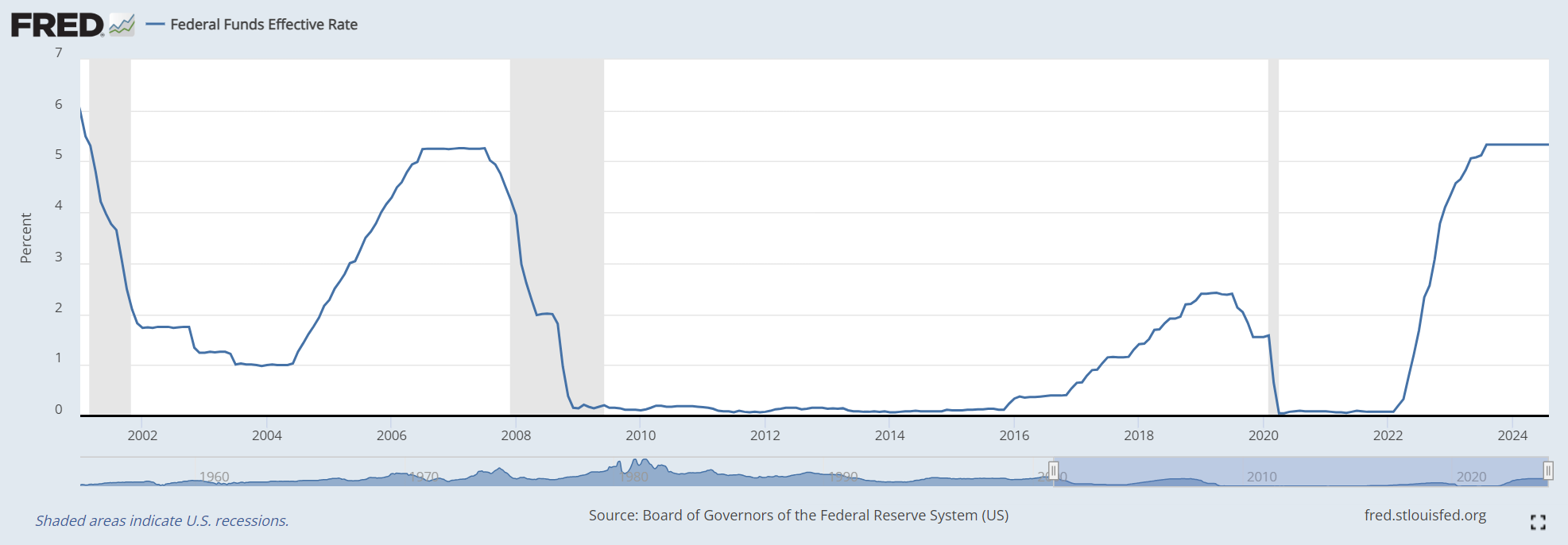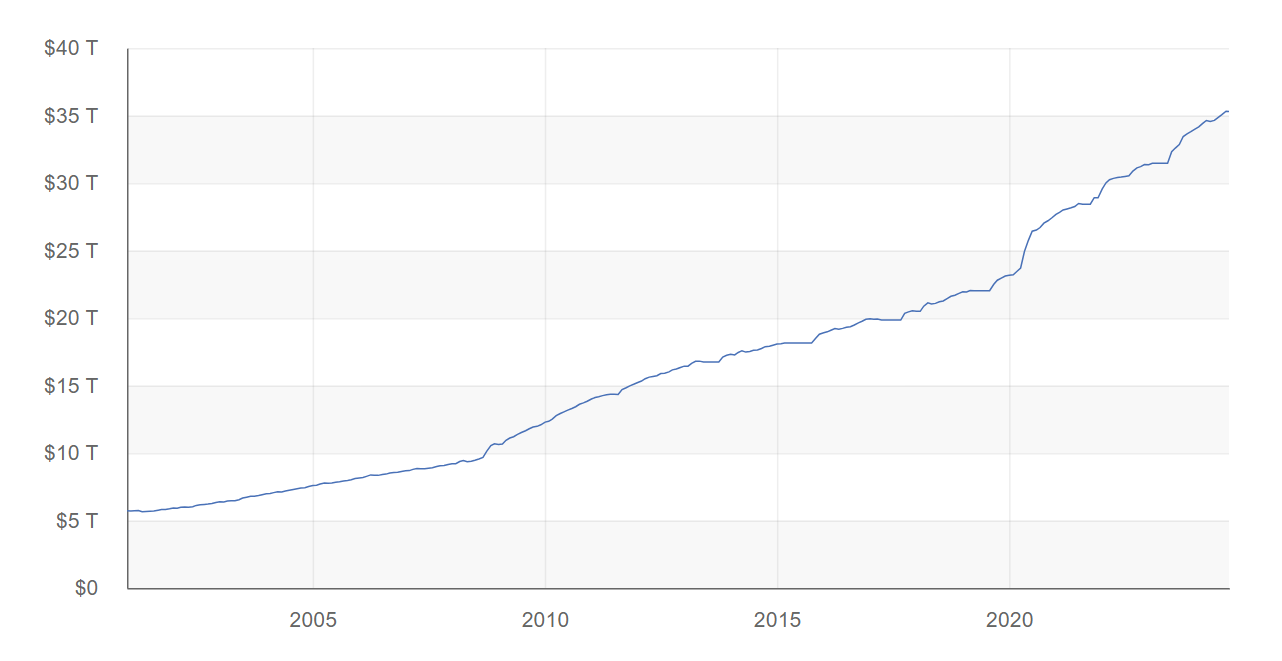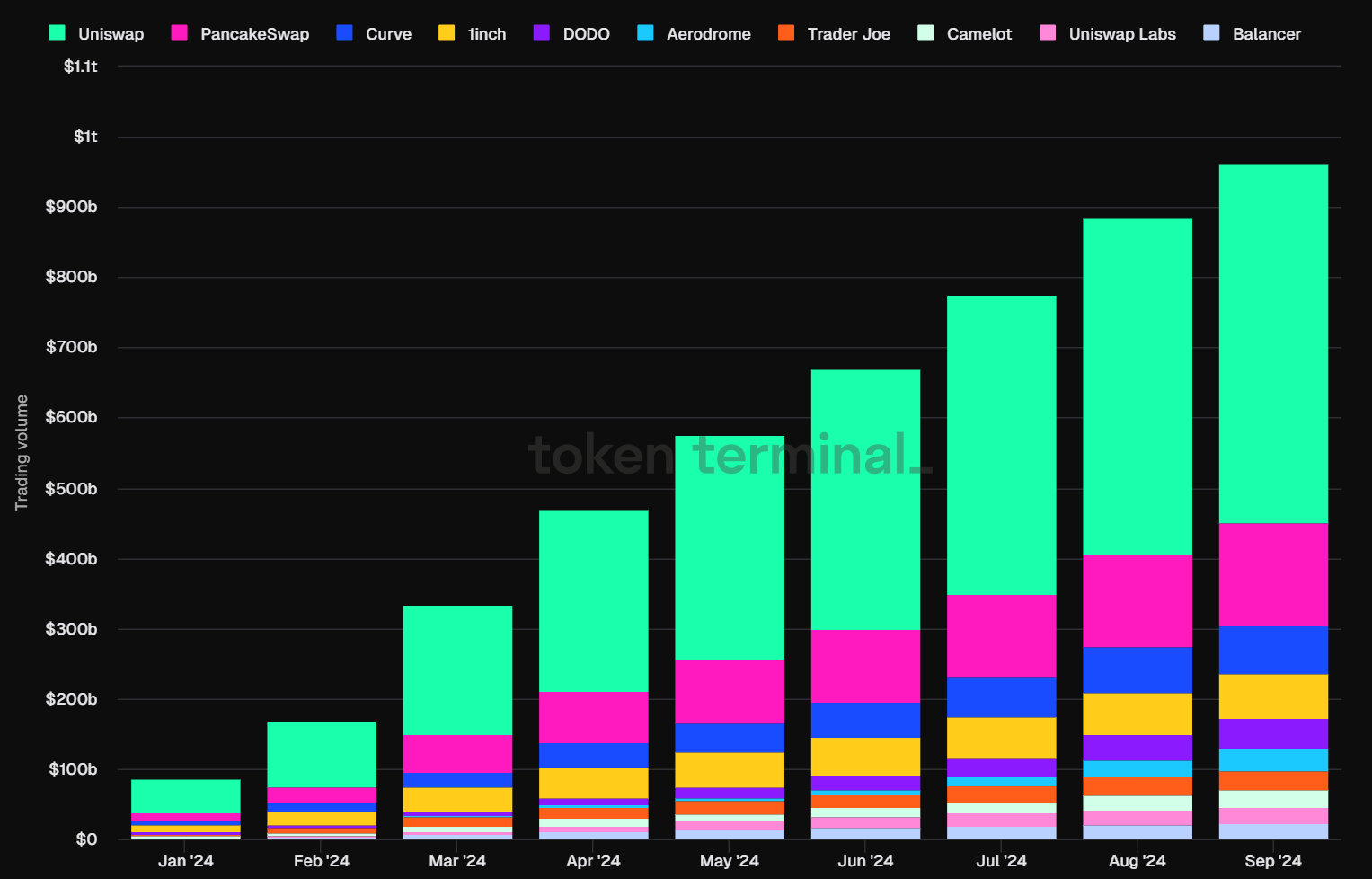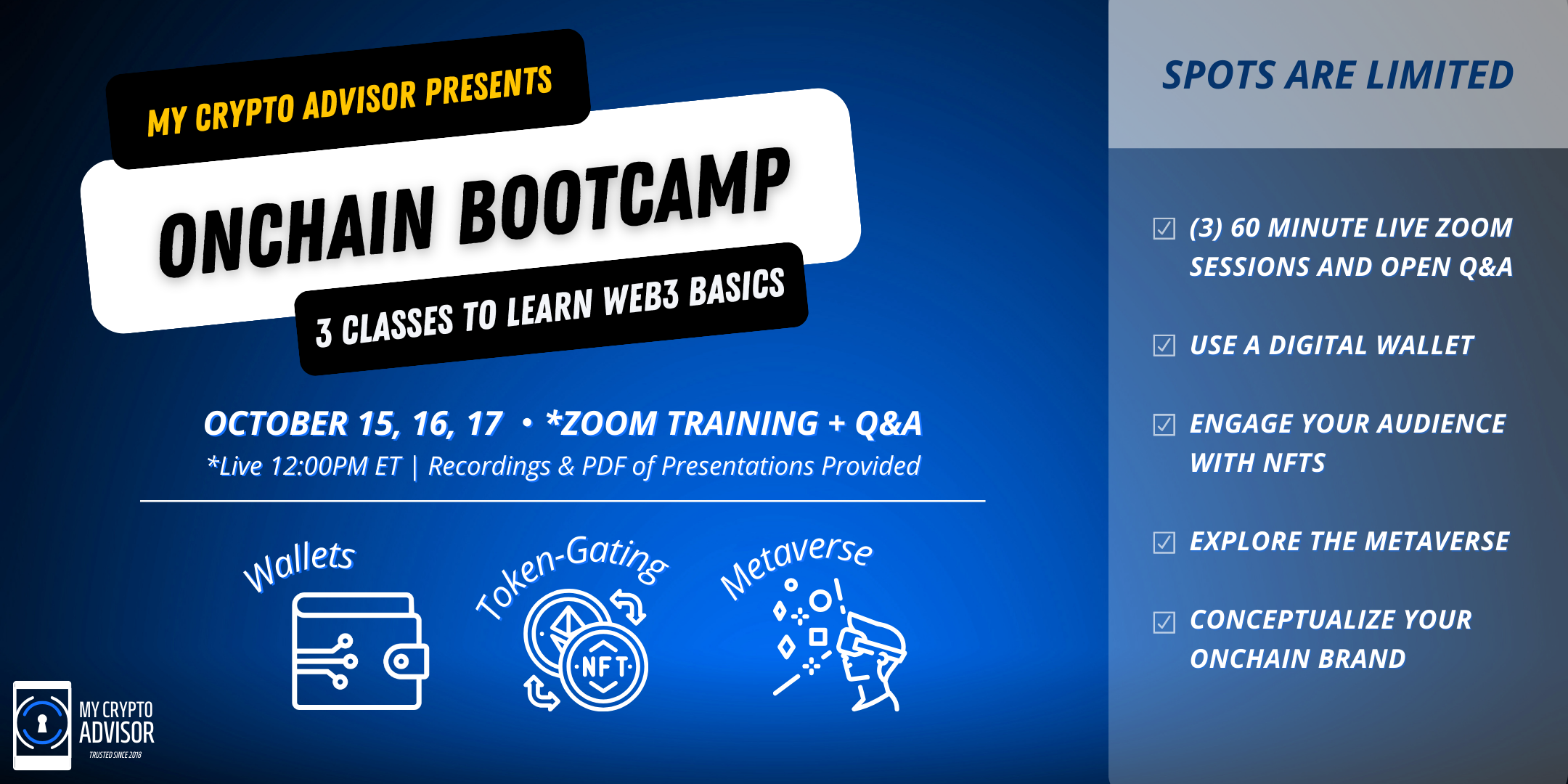In September, the Federal Reserve initiated a fresh liquidity cycle, reducing the federal funds rate half a percentage point from a 23-year high. This unwinding of the economic tightening cycle follows 11 rate hikes dating back to March 2022 and similar measures from several Central Banks including the Bank of England, European Central Bank, and People’s Bank of China. Following the Federal Reserve’s statement, China announced fiscal and monetary stimulus measures “bold by historical standards” including liquidity support for stocks, mortgages, and a reduction in the banking reserve requirement ratio.

A new easing cycle could accelerate the pace of sovereign debt levels. According to the Institute of International Finance (IIF), global debt reached $312 trillion in the first half of 2024. Global government borrowing is projected to increase from $92 trillion to $145 trillion by 2030 and $440 trillion by 2050. The U.S. national debt is $35.30 trillion and projected to rise by $1 trillion about every 100 days according to Bank of America investment strategist Michael Hartnett. In a new era of monetary easing and historic debt levels globally, what will be the impact to bitcoin?
 U.S. Total Public Debt Outstanding – Source: Debt to the Penny
U.S. Total Public Debt Outstanding – Source: Debt to the PennyBitcoin is an open-access monetary system without political borders. Digital scarcity is programmed into Bitcoin, with a fixed supply of 21 million units estimated to be reached by 2140. In a recent whitepaper by BlackRock titled “Bitcoin: A Unique Diversifier”, the world’s largest asset manager, reported that “some investors” consider bitcoin a “flight to safety option” and its “adoption trajectory is likely to be driven by the intensity of concerns over global monetary stability, geopolitical stability, U.S. fiscal sustainability, and U.S. political stability”.
Over $1 trillion worth of capital is currently dormant in the Bitcoin ecosystem. Solutions such as Bitcoin layers and wrapped tokens denominated in BTC have the potential to unlock this dormant capital, while expanding BTC from the “store of value” narrative. Bitcoin layers are secondary networks built on top of Bitcoin to increase scalability and offer functionality comparable to Ethereum and Solana. Examples such as the Lightning Network enable cheap and instantaneous micropayments with bitcoin, whereas Core, Bitlayer, Rootstock, and Stacks permit DeFi and NFT applications.
Coinbase recently launched cbBTC a wrapped token backed 1:1 by BTC custodied by Coinbase. With cbBTC holders can actively use their BTC in supported DeFi applications on Base, Ethereum, and eventually Solana. Wrapped tokens denominated in BTC address the issue of blockchain interoperability, enabling BTC to be traded on DEXs or used as collateral in lending applications on different networks. Examples of DEXs supporting cbBTC include Aerodrome, Curve, and Uniswap, applications with total trading volumes (YTD) of $32.98B, $69B, and $511.49B respectively. Aerodrome a DEX launched natively on Base, reached over $1B in Total Value Locked (TVL) as of October 2024, while accounting for almost half of the TVL on the network, surpassing Uniswap at around $207M.
 Top 10 DEXs by Total Trading Volume
Top 10 DEXs by Total Trading VolumeIn this rapidly evolving financial landscape marked by historic debt growth and a new cycle of monetary easing, the implications of a non-inflationary supranational asset not owned or controlled by any single country are profound. Amid these economic shifts, Bitcoin may not only gain traction as a hedge against systemic risks but also redefine itself as a critical component of a new digital monetary framework. Anyone old enough to remember AOL and Netscape could never imagine the world we live in today. The technological breakthroughs enabled by blockchain could prove more seismic for humanity than the printing press.
 Reserve Your Spot
Reserve Your Spot
DISCLAIMER: This material is for informational purposes only and not intended to provide financial, investment, legal, or tax advice. Information is strictly educational and not an endorsement or solicitation to buy or sell any assets or to participate in any investment or trading strategy. No representation or warranty is made, express or implied, as to the accuracy and completeness of the information. Links to third-party websites in the material do not imply endorsement. Please consult with your own accountant, attorney, investment or other certified professional advisor in relation to any investment decision.

